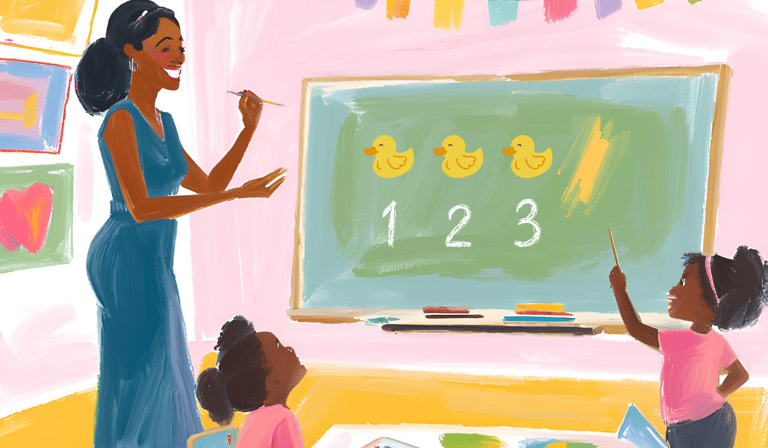5 Math Skills My Preschooler is Mastering this Season + How I am Teaching Them
HOMESCHOOL LESSONSPRESCHOOL
4/27/20251 min read


🧮 Core Skill Focus Areas
1. Counting & Number Fluency
Activity Ideas:
Practice counting forward 1–30 daily in playful ways (marching, clapping, whispering, roaring like a dinosaur, etc.)
Play "Missing Number" games (you say: "13, 14, __, 16" and they fill in).
Count backward from 10 in a fun way (like "rocket countdowns").
Why:
Deepens number sense and sequence memory
My preschooler skips over 16, this will help rejoin that number
2. Intro to Addition Through Hands-On Play
Activity Ideas:
Build It Together: Use teddy bears, blocks, or snacks. Example: "Let's put 2 crackers here and 3 crackers here. How many all together?"
Story Problems with Toys: Act out simple "join" stories with stuffed animals or action figures. ("Two puppies came to play. Three more puppies came. How many puppies now?")
Why:
Building mental flexibility
Grounding addition in real, visual experiences
3. Environmental Shape Exploration
Activity Ideas:
Shape Hunt: Around the house or outside, find circles, rectangles, etc. ("Let’s find 3 rectangles!")
Photo Journal: Take pictures or draw quick sketches of shapes you find (e.g., windows = rectangles).
Why:
Shifts shapes from abstract to concrete
Prepares brain for geometry later
4. Shape Drawing and Number Writing Readiness
Activity Ideas:
Tracing with Objects: Make shapes out of string, playdough, or Wikki Stix — then finger-trace the shape.
Big Air Tracing: Use whole arm motions to "draw" giant shapes in the air.
Sand or Salt Tray: Write simple shapes or numbers with a finger (very low-pressure, sensory-based).
Why:
Builds pre-writing motor memory
Strengthens the small muscles without formal handwriting yet
5. Sorting, Classifying, and Early Data Skills
Activity Ideas:
Sort by 2 attributes: ("Let's find all the red AND small things.")
Make simple graphs: ("Let's graph how many blue vs. yellow blocks we have.")
Why:
Encourages logical thinking
Develops visual discrimination and early graph understanding


